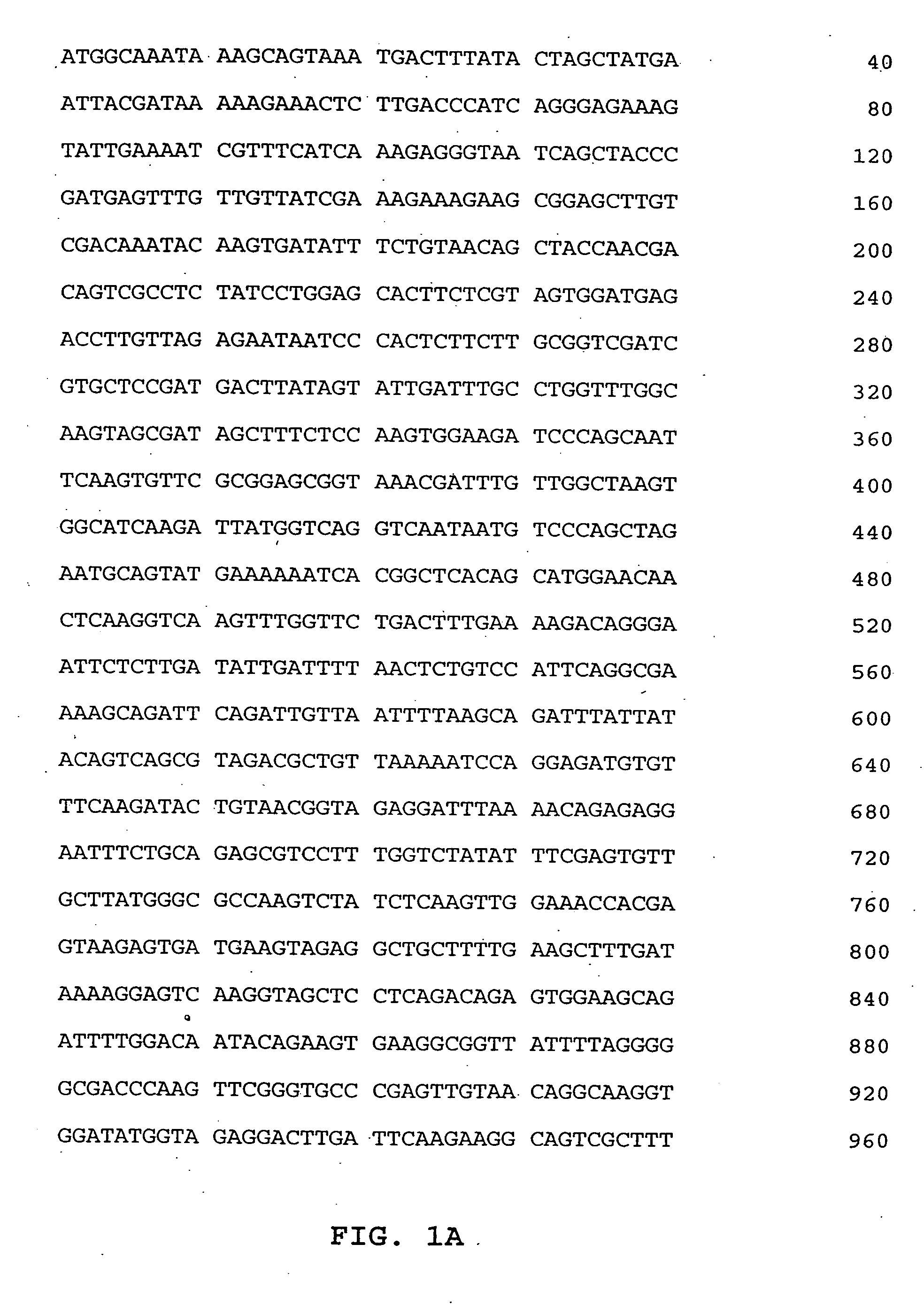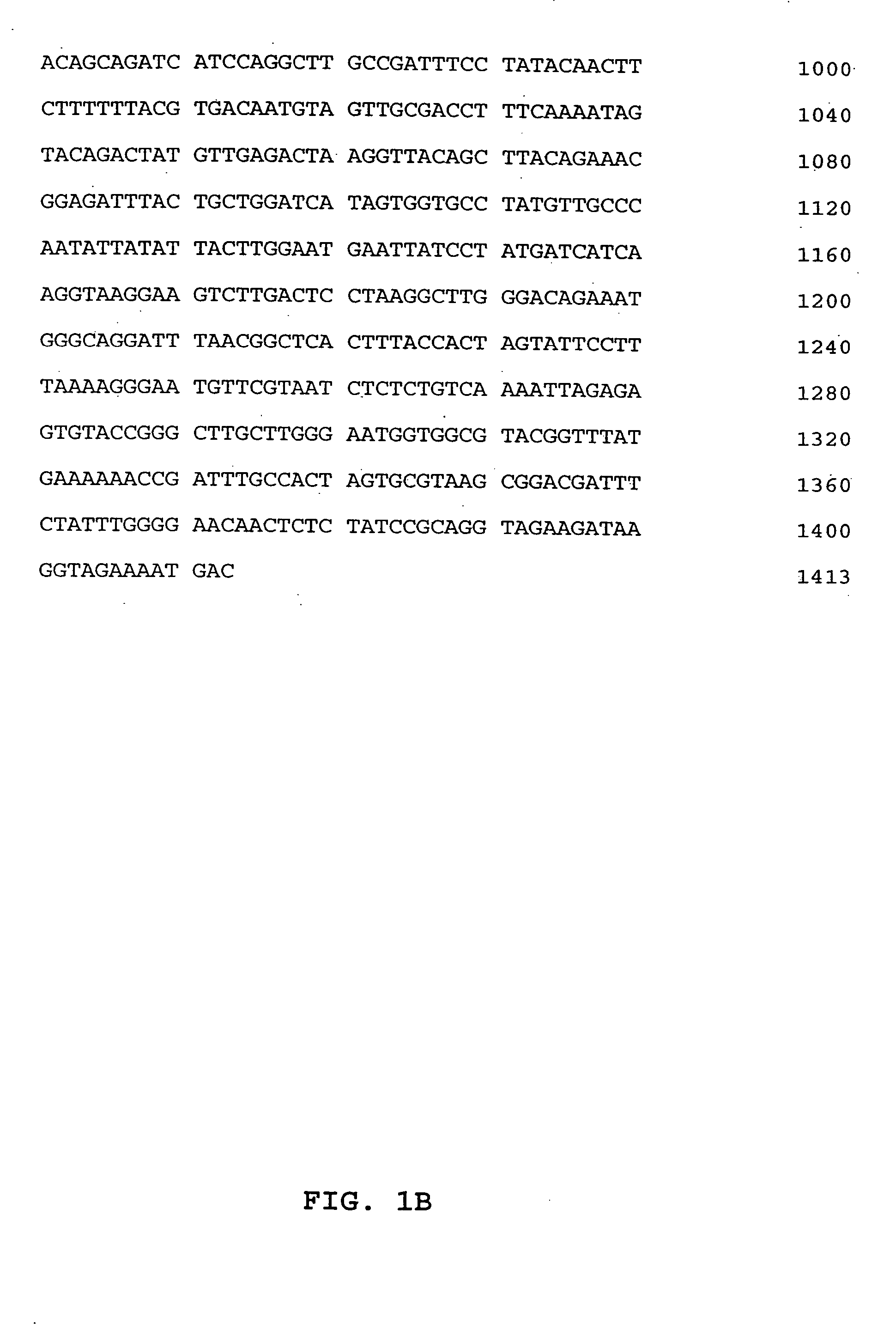Modified immunogenic pneumolysin compositions as vaccines
a technology of immunogenic pneumolysin and composition, applied in the field of vaccines, can solve the problems of respiratory burst, phagocytic function of polymorphonuclear leukocytes, and ineffective vaccines in all populations, and achieve the effect of inducing protective immunity
- Summary
- Abstract
- Description
- Claims
- Application Information
AI Technical Summary
Problems solved by technology
Method used
Image
Examples
example 1
Expression of Pneumolysin.
[0135]E. coli strain BL21 (DE3) Δompa transformed with pET-17b or pET-24a containing the desired gene was grown with moderate aeration at 30° C. in LB supplemented with 0.4% glucose and 100 μg / ml of carbenicillin (for pET-17b constructs) or 50 μg / ml of kanamycin (for pET-24a constructs). When the OD600 reached 0.6, IPTG was added to a final concentration of 0.4 mM (for pET-17b constructs) of 1 mM (for pET-24a constructs) and the cells were allowed to incubate for another 2 h for screening, or 5 h for larger scale production. To assay for pneumolysin levels, 1.5 ml aliquots were removed prior to induction and at various time points after induction and examined by SDS-PAGE.
example 2
Cloning of the Pneumolysin Gene for Streptococcus pneumoniae serotype 14.
[0136] Genomic DNA was isolated from approximately 0.5 g Streptococcus pneumoniae serotype 14 using the method described above. This DNA served as the template for two pneumolysin-specific oligonucleotides in a standard PCR reaction. These oligonucleotides were designed to be complementary to the 5′ and 3′ flanking regions of the pneumolysin gene from S. pneumoniae serotype 2 and to contain XbaI restriction sites to facilitate the cloning of the fragment if desired. The sequence of the forward oligonucleotide was 5′ AAC CTT GAT TGA TCT AGA TAA GGT ATT TAT GTT GG 3′ and the reverse oligonucleotide had the sequence 5′ TCT TTT TGT CTC TAG AAT TCT CCT CTC CTA GTC 3′. The PCR reaction conditions were as follows: 200 ng S. pneumoniae type 14 genomic DNA, the two oligonucleotide primers described above at 1 μM of each, 200 μM of each dNTP, PCR reaction buffer (10 mM Tris HCl, 50 mM KCl, pH 8.3), 1.5 mM MgCl3, and 2.5...
example 3
Expression of the pneumolysin gene in E. coli.
[0137] Plasmids capable of expressing the mature pneumolysin protein were constructed by amplifying DNA containing the full-length pneumolysin gene (pST20, pST85, or type 14 genomic DNA) with nested oligonucleotides designed to isolate the pneumolysin coding region. The forward oligonucleotide was designed to contain a NdeI site and would install a start codon at the 5′ end of the coding region. This primer had the sequence 5′ TAT TAG GAG GAG CAT ATG GCA AAT AAA GCA GTA AAT G 3′. The reverse oligonucleotide was designed to contain an XhoI site and had the sequence 5′ GGC CTC TTT TTG TCT CGA GCA TTC TCC TCT CCT AGT C 3′. This strategy allowed the cloning of the fragment encoding mature pneumolysin into the NdeI and XhoI sites of either the pET-17b or pET-24a. Standard PCR was conducted using a template containing the entire pneumolysin gene (type 1, 2 & 14) and the two oligonucleotides described above. This PCR reaction yielded a 1.6 kb ...
PUM
| Property | Measurement | Unit |
|---|---|---|
| excitation wavelength | aaaaa | aaaaa |
| excitation wavelength | aaaaa | aaaaa |
| pH | aaaaa | aaaaa |
Abstract
Description
Claims
Application Information
 Login to View More
Login to View More - R&D
- Intellectual Property
- Life Sciences
- Materials
- Tech Scout
- Unparalleled Data Quality
- Higher Quality Content
- 60% Fewer Hallucinations
Browse by: Latest US Patents, China's latest patents, Technical Efficacy Thesaurus, Application Domain, Technology Topic, Popular Technical Reports.
© 2025 PatSnap. All rights reserved.Legal|Privacy policy|Modern Slavery Act Transparency Statement|Sitemap|About US| Contact US: help@patsnap.com



